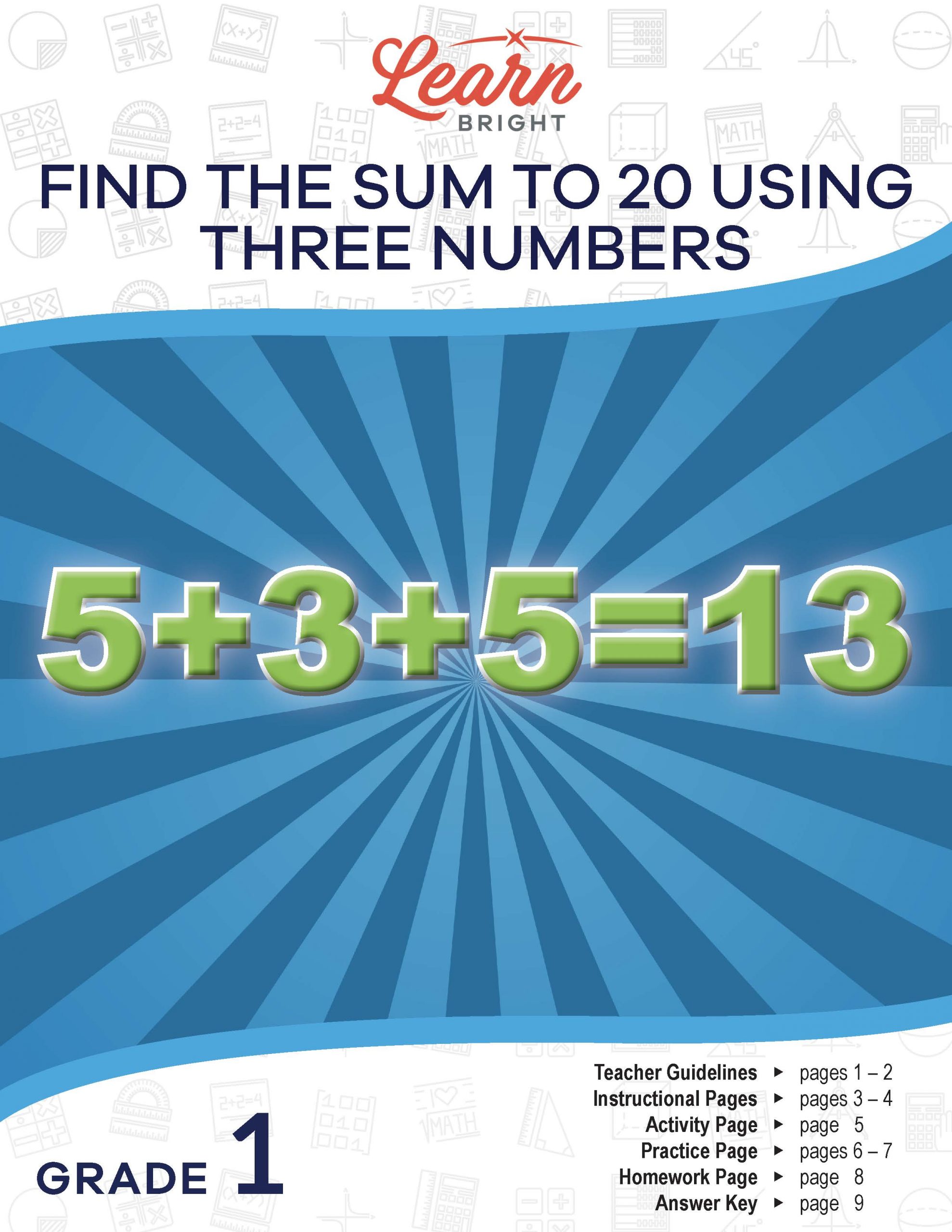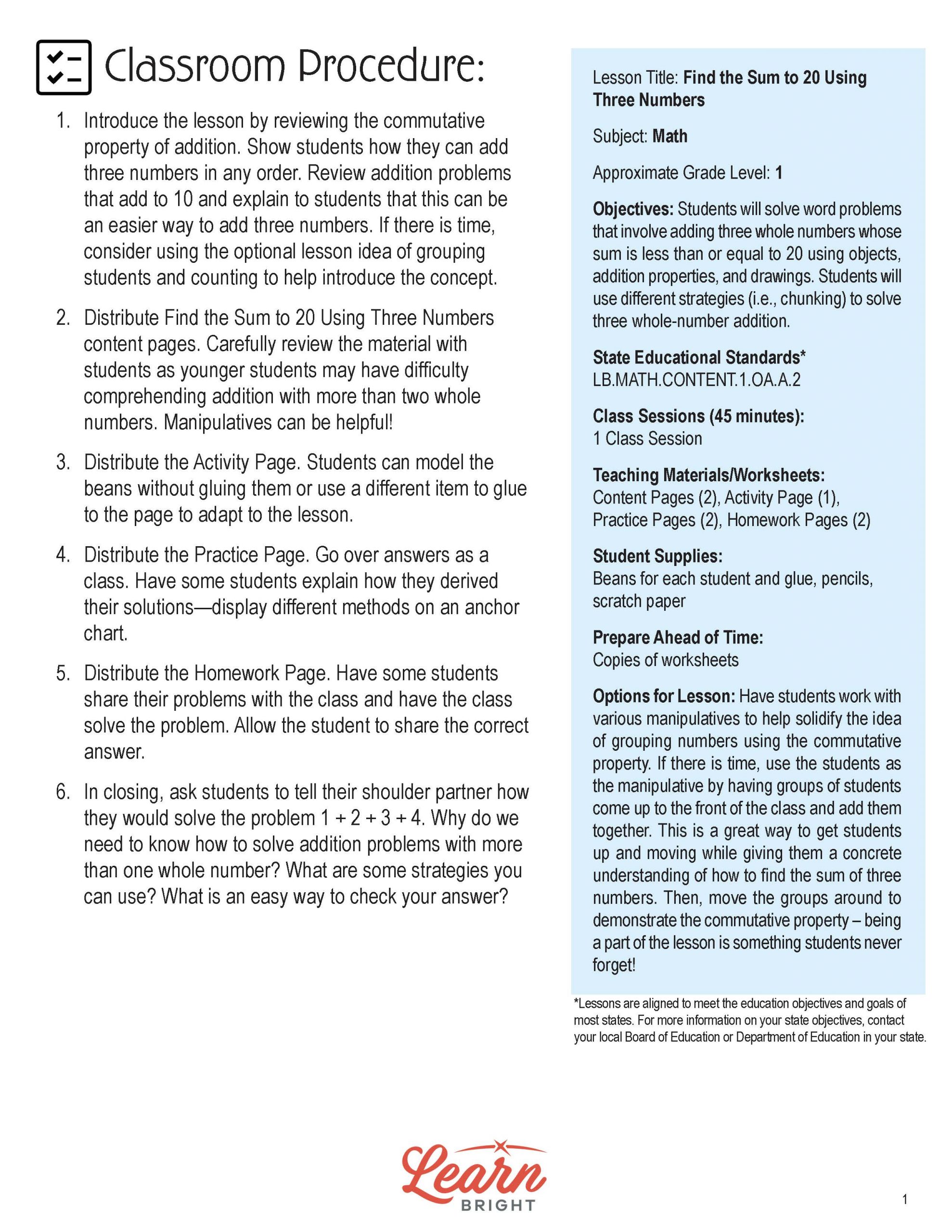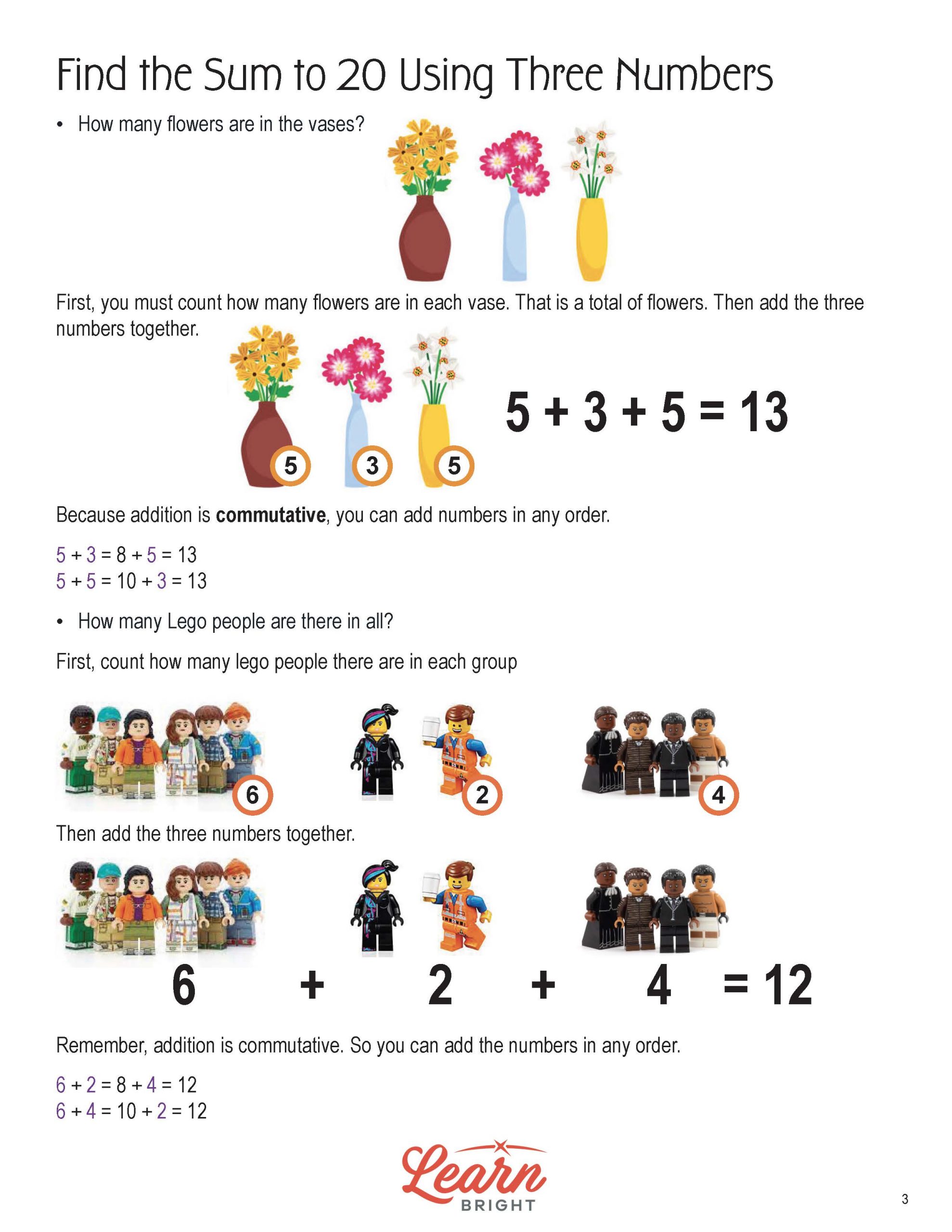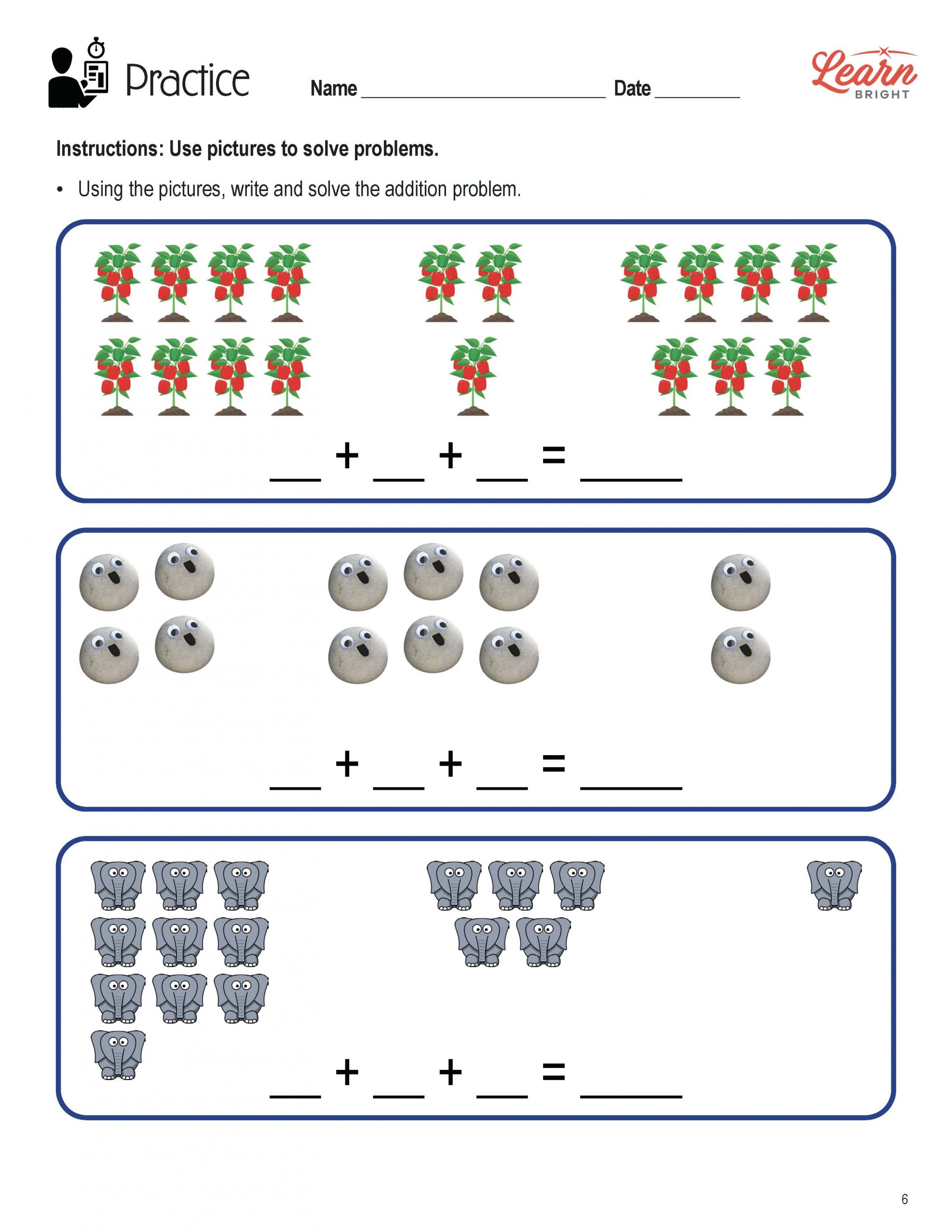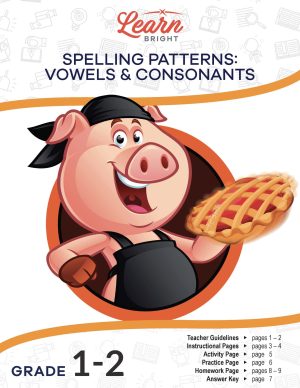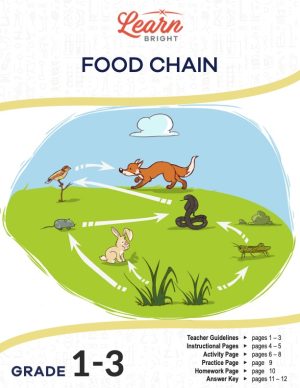Description
What our Find the Sum to 20 Using Three Numbers lesson plan includes
Lesson Objectives and Overview: Find the Sum to 20 Using Three Numbers helps students learn how to solve word problems involving adding three whole numbers. Students will use objects, addition properties, and drawings to solve the problems and will be able to use different strategies to solve the addition. This lesson is for students in 1st grade.
Classroom Procedure
Every lesson plan provides you with a classroom procedure page that outlines a step-by-step guide to follow. You do not have to follow the guide exactly. The guide helps you organize the lesson and details when to hand out worksheets. It also lists information in the blue box that you might find useful. You will find the lesson objectives, state standards, and number of class sessions the lesson should take to complete in this area. In addition, it describes the supplies you will need as well as what and how you need to prepare beforehand. The supplies you need for this lesson include beans, glue, pencils, and scratch paper.
Options for Lesson
Included with this lesson is an “Options for Lesson” section that lists a number of suggestions for activities to add to the lesson or substitutions for the ones already in the lesson. One optional addition to this lesson is to have students work with various manipulatives to help solidify the idea of grouping numbers using the commutative property. If you have time, you can have the students be the manipulatives by having groups of students come up to the front of the class and adding them together; this is a great way to get students up and moving while giving them a concrete understanding of how to find the sum of three numbers. You can then move the groups around to demonstrate the commutative property!
Teacher Notes
The teacher notes page includes a paragraph with additional guidelines and things to think about as you begin to plan your lesson. This page also includes lines that you can use to add your own notes as you’re preparing for this lesson.
FIND THE SUM TO 20 USING THREE NUMBERS LESSON PLAN CONTENT PAGES
Find the Sum to 20 Using Three Numbers
The Find the Sum to 20 Using Three Numbers lesson plan includes two content pages. The lesson begins with a picture of three vases filled with flowers and asks students how many flowers are in the vases. To figure out the answer, you need to count how many flowers are in each vase and then add those three numbers together. Addition is commutative, so you can add the numbers in any order. The vases have 5, 3, and 5 flowers each, so the total number of flowers is 13.
The lesson then shows pictures of three groups of Lego people and asks how many there are in total. You follow the same process here to find the answer. Count the number of people in each group and add them together.
Another method for finding the sum, apart from counting objects and adding them together, is to draw objects. For the problem 1 + 7 + 3, you can draw happy faces (or anything else) to help you find the answer. You draw the faces, count each group, and add! The lesson includes one more example of the method as well.
FIND THE SUM TO 20 USING THREE NUMBERS LESSON PLAN WORKSHEETS
The Find the Sum to 20 Using Three Numbers lesson plan includes three worksheets: an activity worksheet, a practice worksheet, and a homework assignment. You can refer to the guide on the classroom procedure page to determine when to hand out each worksheet.
BEAN MODEL ACTIVITY WORKSHEET
For the activity worksheet, students will model each of the given addition problems by gluing the beans in the correct place on the worksheet.
PICTURES PRACTICE WORKSHEET
The practice worksheet asks students to use pictures to solve three addition problems.
WORD PROBLEM HOMEWORK ASSIGNMENT
For the homework assignment, students will write a word problem using the given addition problem. They will then solve it by drawing a picture.
Worksheet Answer Keys
This lesson plan includes answer keys for the practice worksheet and the homework assignment. If you choose to administer the lesson pages to your students via PDF, you will need to save a new file that omits these pages. Otherwise, you can simply print out the applicable pages and keep these as reference for yourself when grading assignments.

